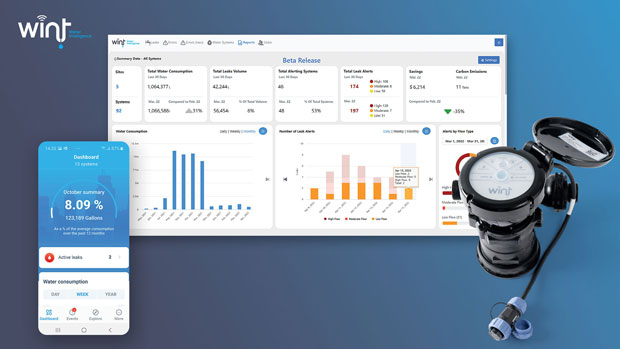Start reducing your facility’s water associated carbon footprint and contribute to saving the planet!
Effectively managing water supply is an increasingly urgent issue for facilities management teams. The costs associated with both water waste and damage are a growing pain, as much as the impact of ignoring the environmental side effects of our ongoing inefficient management of the global water stress.
In today’s world, water damage and waste are among the most significant threats to building performance. Poor water management can result in direct costs, including inflated utility bills, the repair and replacement of damaged equipment, as well as indirect costs such as operational disruption, lost time, and increasingly high insurance premiums and deductibles. In extreme cases, water damage can render a building uninhabitable, resulting in significant financial losses to any property or business owner.
As energy and water prices continue to rise, facility managers are looking for better ways to lower operating costs without compromising on performance. Strategic management of this essential but scarce natural resource can help organisations use less water, save money, reduce the strain on shared water supplies, cut energy consumption, and ultimately decrease the carbon footprint. By implementing water-saving tactics and technology, facility managers can mitigate the risk of water incidents and the resulting operational costs.
The Carbon Footprint of Water
Water treatment and delivery account for a large percentage of the world’s total electricity consumption (13% of the electric energy spent in the US according to latest research). In some regions or locations, water may be the single greatest energy investment. The energy required to treat and distribute the world’s supply of clean, safe water releases massive amounts of carbon into the atmosphere. “The Carbon Impact of Water” report found that on an average, every cubic meter of water consumed generates 10.6Kg of carbon emissions. Doing the math, while knowing that about a quarter of the water entering a building goes to waste – this means that a typical built structure’s annual water waste itself generates tons of carbon emissions that contributes every year to a worldwide greenhouse effect.
Robust tech-driven water management solutions have been proven to improve water efficiency and provide peace of mind for facility professionals. Advanced smart building technological solutions can reduce water waste significantly – by over 25%. By incorporating these solutions into the property, facility managers can oversee the buildings’ water systems in a more sustainable, yet cost-effective way of lowering their operational implications.
AI-Powered Technology Innovation
One global leading water management solution provider, WINT Water Intelligence – leverages artificial intelligence and machine learning to detect leaks, high water flow, and waste, providing real-time data to help users make informed decisions. Therefore, WINT can help prevent water damage by detecting leaks and notifying building operators in real-time, allowing them to take action before significant damage occurs, even if the building is unoccupied or the maintenance personnel are remote.
With WINT’s AI-Powered systems, facilities management teams can proactively mitigate all types of water events with an IoT connected edge-device that learn and analyse normal water usage patterns, in order to determine an anomaly. Once that is detected it will trigger an alert and even automatically shut-off the water supply at the source of an impacted location to minimise potential damage.
The benefits of such solutions extend far beyond financial savings, though. They can also improve the health and wellbeing of buildings’ occupants and the surrounding environment. Moreover, IoT and AI-based technologies like WINT can ensure that building owners and facility managers optimise their operations by making data-driven decisions, thus transforming their asset to become even more attractive investment.
Microsoft Success Story

[Photographer credit: Amir Gershon]
Take Microsoft for example – They deployed it across their new LEED-certified R&D green campus and accomplished immediate operational and environmental benefits. In the first 12 months since installing the systems, Microsoft have cut 8 million gallons of water from going to waste.
Ultimately, when it comes to facilities management, everyone would like a relief to their daily concerns. Selecting the right water management solution serves as a mission critical tool in every operation, helping a growing number of businesses meet their environmental, social and governance (ESG) sustainability goals – and play a pivotal role in efforts to cut carbon footprint and empower teams to adopt an environmentally friendly approach.
Read more about “Sustainable Savings: The Financial Benefits of Operating a Green Building” – this article offers insights into the long-term return of investment (ROI) in sustainable technology.








